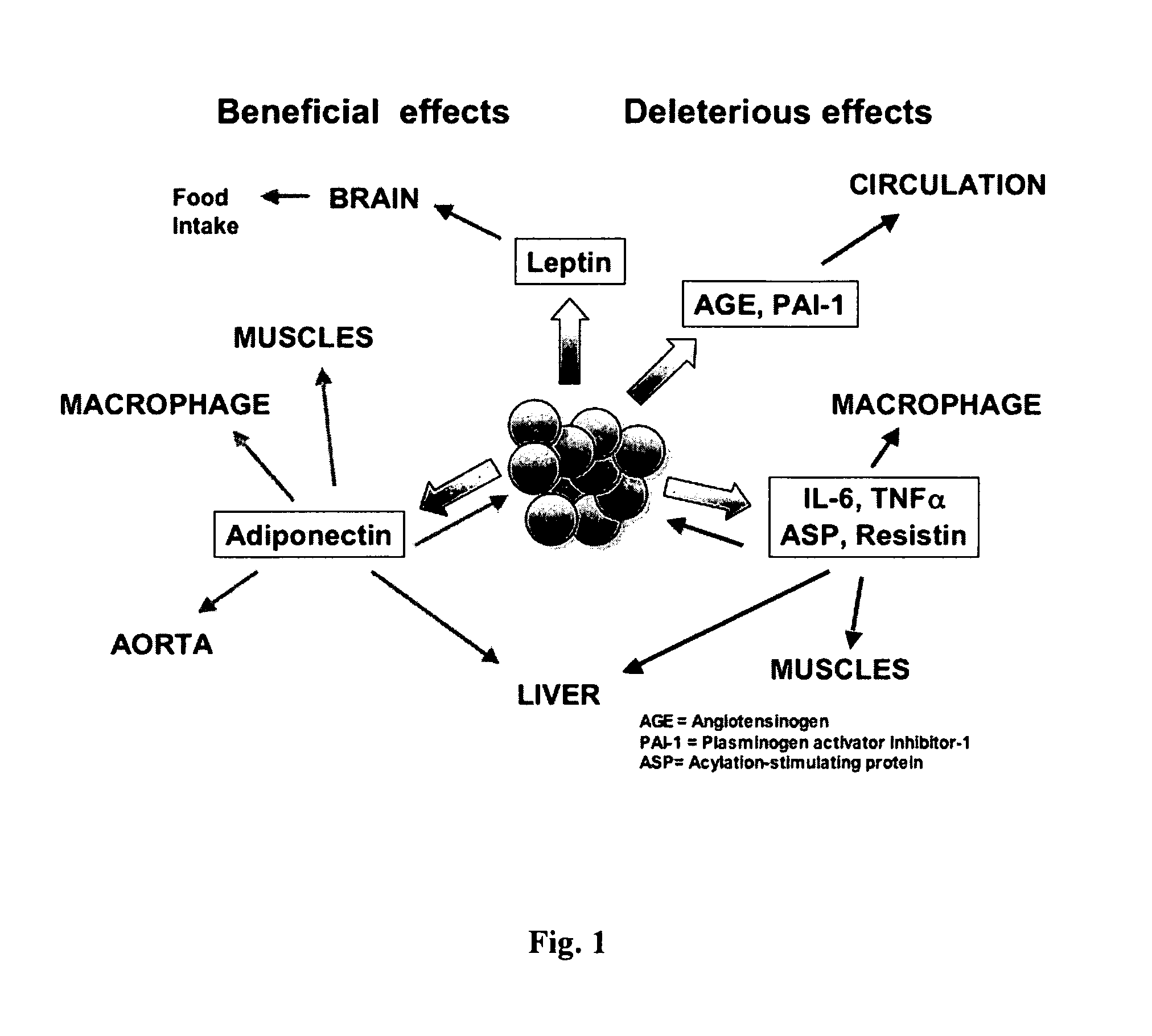Anti-inflammatory botanical products for the treatment of metabolic syndrome and diabetes
a technology of botanical products and metabolic syndrome, applied in the field of botanical products for the treatment of metabolic syndrome and diabetes, can solve the problems of monotherapy failing to adequately control the myriad of metabolic imbalances, increasing the rate of obesity with time, and inability to maintain adequate blood glucose for extended periods of tim
- Summary
- Abstract
- Description
- Claims
- Application Information
AI Technical Summary
Benefits of technology
Problems solved by technology
Method used
Image
Examples
example 1
Screening of Hops Derivatives, Select Phytochemicals and Phytoextracts for Anti-Inflammatory Activity in the LPS-Stimulated Murine Macrophage Model
[0193]The Model—The murine macrophage cell line RAW 264.7 is a well-established model for assessing anti-inflammatory activity of test agents. Stimulation of RAW 264.7 cells with bacterial lipopolysaccharide induces the expression of COX-2 and production of PGE2. Inhibition of PGE2 synthesis is used as a metric for anti-inflammatory activity of the test agent.
[0194]Equipment—Equipment used in this example included an OHAS Model #E01140 analytical balance, a Form a Model #F1214 biosafety cabinet (Marietta, Ohio), various pipettes to deliver 0.1 to 100 μl (VWR, Rochester, N.Y.), a cell hand tally counter (VWR Catalog #23609-102, Rochester, N.Y.), a Form a Model #F3210 CO2 incubator (Marietta, Ohio), a hemocytometer (Hausser Model #1492, Horsham, Pa.), a Leica Model #DM IL inverted microscope (Wetzlar, Germany), a PURELAB Plus Water Polishin...
example 2
Inhibition of PGE2 Synthesis in Stimulated and Nonstimmulated Murine Macrophages by Hops Compounds and Derivatives
[0208]The objective of this example was to assess the extent to which hops derivatives inhibited COX-2 synthesis of PGE2 preferentially over COX-1 synthesis of PGE2 in the murine macrophage model. The RAW 264.7 cell line as described in Example 1 was also used in this example. Equipment, Chemicals and Reagents, PGE2 assay, and calculations were as described in Example 1.
[0209]Test materials—Hops derivatives as described in Table 1 were used. The COX-1 selective aspirin and COX-2 selective celecoxib were used as positive controls. Aspirin was obtained from Sigma (St. Louis, Mo.) and the commercial formulation of celecoxib was used (Celebrex™, Searle & Co., Chicago, Ill.).
[0210]Cell culture and treatment with test material—RAW 264.7 cells (TIB-71) were obtained from the American Type Culture Collection (Manassas, Va.) and sub-cultured as described in Example 1. For COX-2 a...
example 3
Lack of Direct PGE2 Inhibition by Reduced Isomerized Alpha Acids or Isomerized Alpha Acids in LPS-Stimulated Raw 264.7 Cells
[0215]The objective of this study was to assess the ability of the hops derivatives Rho isoalpha acids and isomerized alpha acids to function independently as direct inhibitors of COX-2 mediated PGE2 biosynthesis in the RAW 264.7 cell model of inflammation. The RAW 264.7 cell line as described in Example 1 was used in this example. Equipment, Chemicals and Reagents, PGE2 assay, and calculations were as described in Example 1.
[0216]Test materials—Hops derivatives Rho isoalpha acids and isomerized alpha acids, as described in Table 1, were used. Aspirin, a COX-1 selective positive control, was obtained from Sigma (St. Louis, Mo.).
[0217]Cell culture and treatment with test material—RAW 264.7 cells (TIB-71) were obtained from the American Type Culture Collection (Manassas, Va.) and sub-cultured as described in Example 1. Following overnight incubation at 37° C. wit...
PUM
 Login to View More
Login to View More Abstract
Description
Claims
Application Information
 Login to View More
Login to View More - R&D Engineer
- R&D Manager
- IP Professional
- Industry Leading Data Capabilities
- Powerful AI technology
- Patent DNA Extraction
Browse by: Latest US Patents, China's latest patents, Technical Efficacy Thesaurus, Application Domain, Technology Topic, Popular Technical Reports.
© 2024 PatSnap. All rights reserved.Legal|Privacy policy|Modern Slavery Act Transparency Statement|Sitemap|About US| Contact US: help@patsnap.com










